Spent this morning at the Zonal Anthropological Museum in Port Blair, trying to learn a bit about the people that are the original inhabitants of the Andaman and Nicobar islands. Old dusty displays of artifacts like “fish arrows” and “fish baskets.” There were repeated warnings about not taking pictures or videos despite the fact that the naked breasts as well as male genitalia were often pixelated; these warnings prompted me to draw, starting with the elegant canoe first. (Is there anything as beautiful as a tree? Yes, a boat! One is a natural form but the other one, adapted to nature’s rules, is made by humans. I find boats immensely attractive.)
Here was another boat made by hollowing out a tree trunk. What a remarkable innovation to keep the balance!
In several of the display cases, the plywood had cracked and there were small holes bored into the wood by termites. Also, as evidence of the work of termites, there were tiny mounds of fine wooden particles on the display floor. The photographs on the walls were sometimes faded and dotted with fungus. It was hot inside except under the fans. Tourist families sometimes came in large, noisy numbers but I stayed focused and took notes—except that I kept telling myself that what I was doing was an empty exercise. Pictures are no substitute for people. I was aware that it would have been difficult if not impossible for me to meet the people whose pictures were displayed at the museum but that didn’t take away the growing regret.
During the evenings in my hotel room, I have been reading from a book that I have assigned for the first time in my journalism class. My semester starts in three weeks. The book is Telling True Stories, edited by Mark Kramer and Wendy Call. An early essay in the book is by Katherine Boo and includes great lines like these: “Narrative about serious subjects might not be a popular craft, but it’s essential. Without the telling, well-reported detail, the narrative form is an empty seduction. It’s us listening to ourselves talk, falling in love with the sound of our own voices.”
Katherine Boo is the reason I’m unhappy and dissatisfied. I kept thinking of her essay as I moved from one display to another in the anthropological museum. Why wasn’t I talking to people? My curiosity was directed only toward artifacts and people’s histories as described by anthropologists; instead, I’d have preferred to do the work, as Boo would have wanted me to, of observing the gap between what people said and how they lived.
But here I was, only observing the gap between what people said and what they really meant. Beside a representation of a woman from the Onge tribe, the caption read “Tussle used by Onge women.” Tussle? Oh, tassle!
Just as I was leaving, after having stood for a couple of hours in the heat, reading bureaucratic prose, a photograph caught my eye. It showed a young Nicobari male in the foreground. He and other younger males were together carrying a small raft made with bamboo. I wanted to fix the photograph in my mind and did a quick rough sketch and scribbled down the question that had formed in my mind: “This picture was taken decades ago, I’m sure. What has the little laughing boy grown up into? What is his story?”
My new year resolution is to draw and write but, most importantly, I want to interact and talk with more and more people. (I also want to exercise and I hope my wife and my friends hold me to this promise.) How to put in place a structure through which I can invite conversations with fellow Indians on what they feel about the changes in our society? Is Substack the place? Should I use a scheduling app like Calendly? Is there a way I can use my website to prompt engagment? These are the thoughts I have at the beginning of the new year. Wishing everyone who has read this far a very happy new year!
Talking of interacting with people, the next leg of this journey takes me to Delhi where I’ll have a book event at the IIC. Details below:
P.S.
I was in Bangalore for a night and allowed my pal Vivek Shanbhag to take me to an avarebelle mela where we ate all manner of things. Earlier in the evening I signed books at The Bookhive, Blossom Book House, and The Bookworm. Please pick up a signed copy!
P.P.S.
Earlier today, while I was carefully making drawings of artifacts collected by government anthropologists, Neha Dixit (of The Many Lives of Syeda X fame) posted this lovely photo from Wayanad Literature Festival. To my right is Rahul Bhatia, the author of The Identity Project. Katherine Boo isn’t the only reason I’m dissatisfied with my life; Neha and Rahul are thorns in my side too, their recent books on India will be difficult, if not impossible, to emulate. So, okay, that’s another new year’s resolution: make notes from my reading of Neha and Rahul—and ask myself, how, how, how.

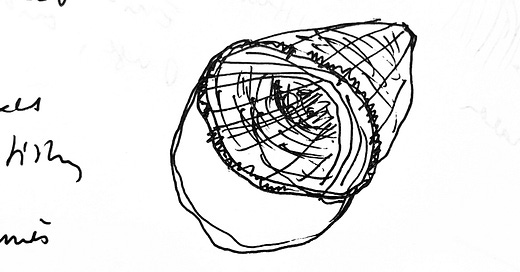



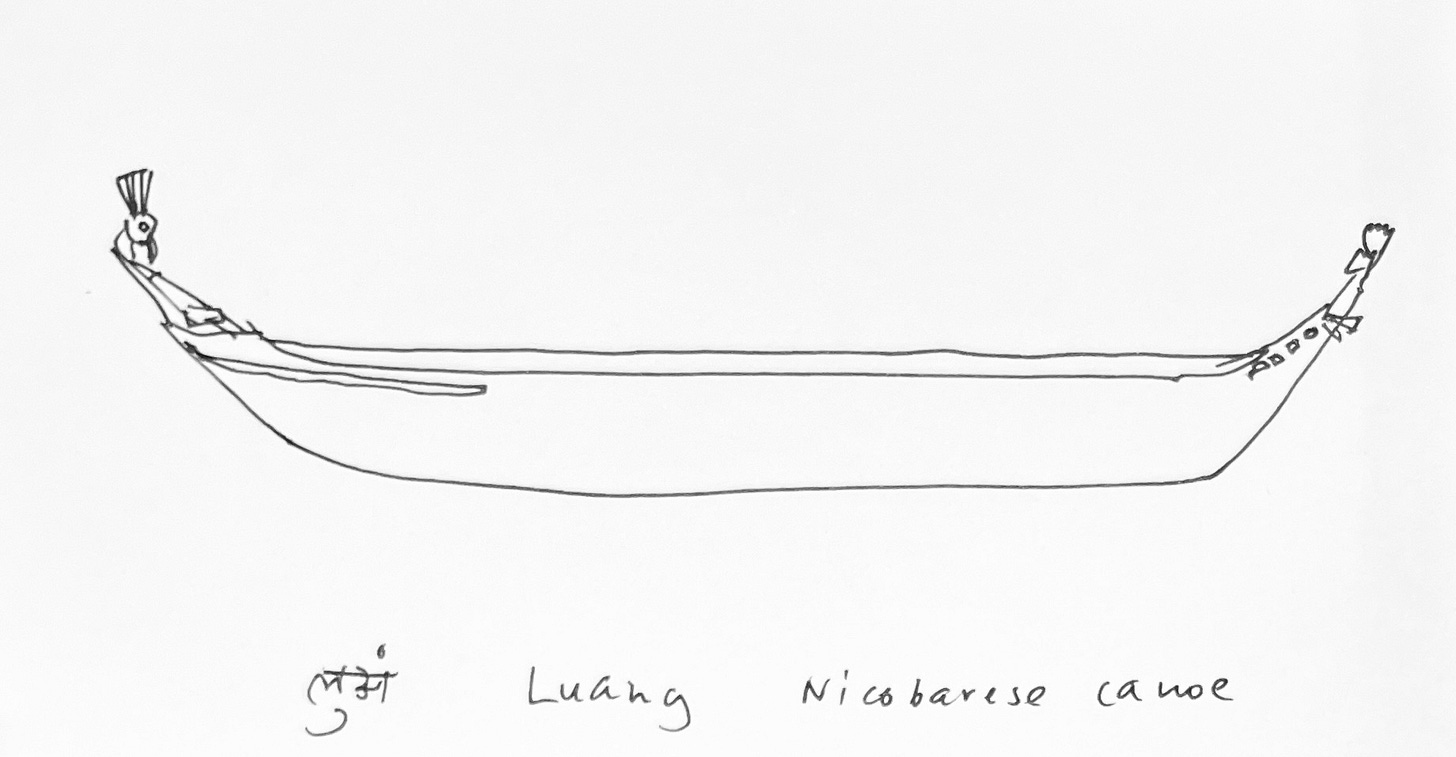
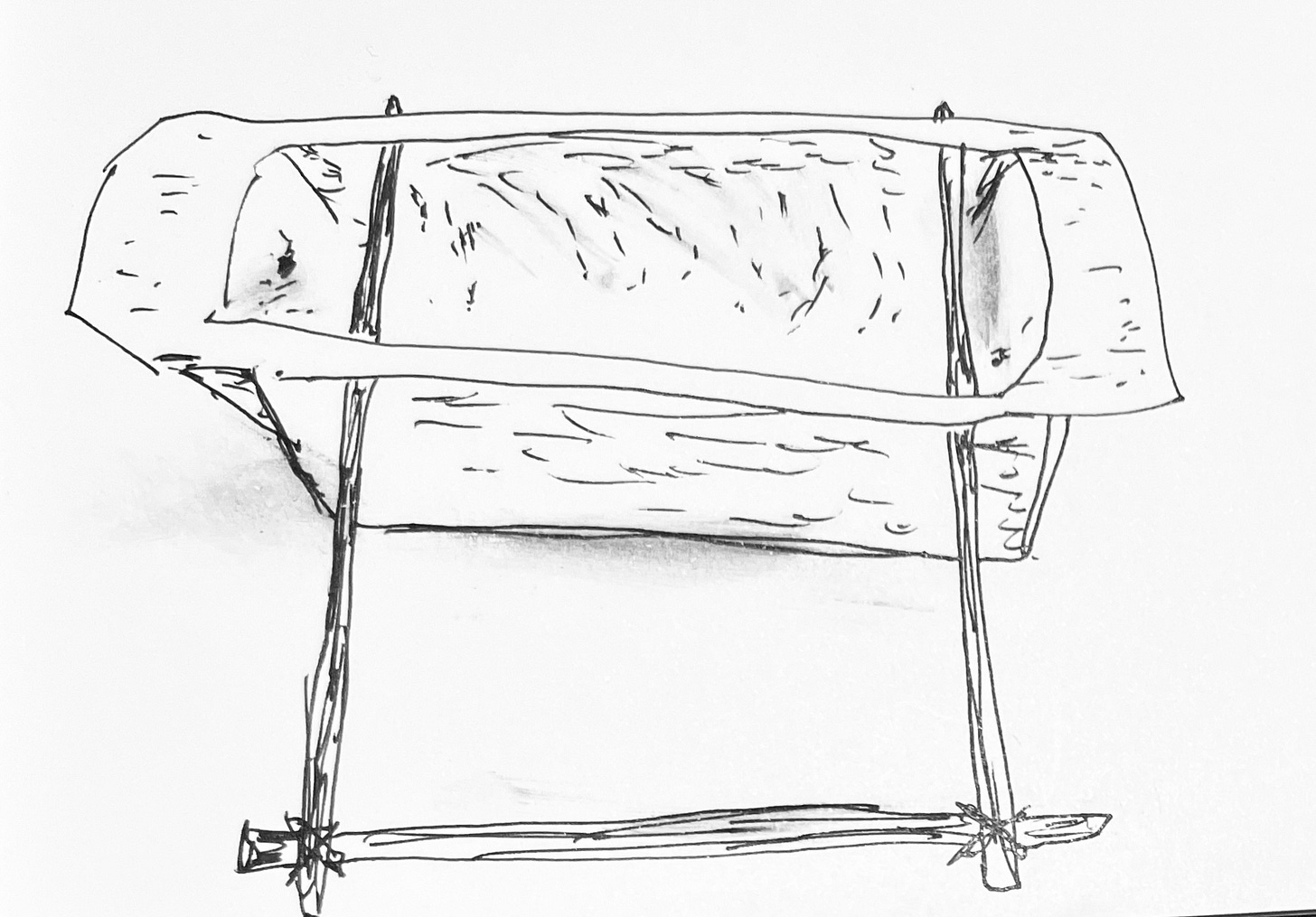
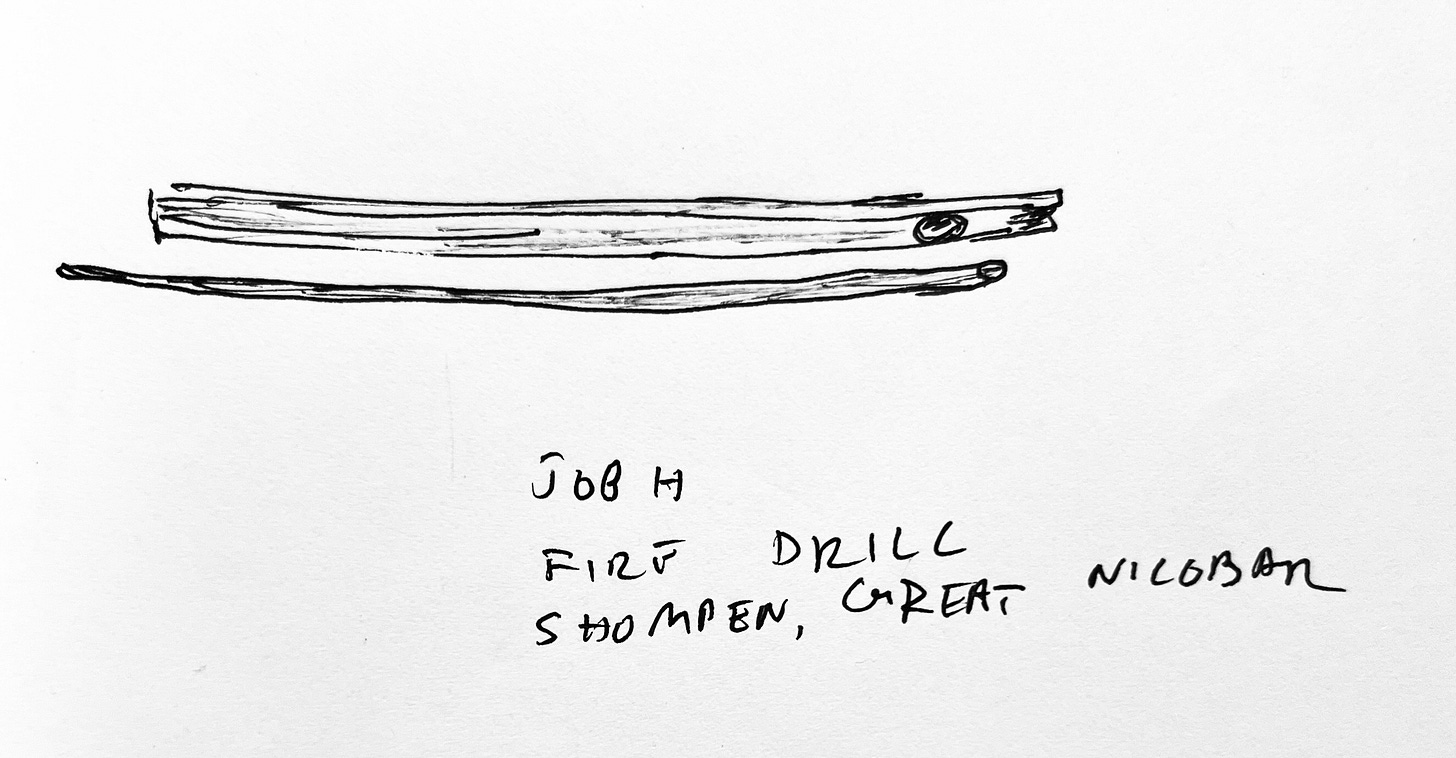
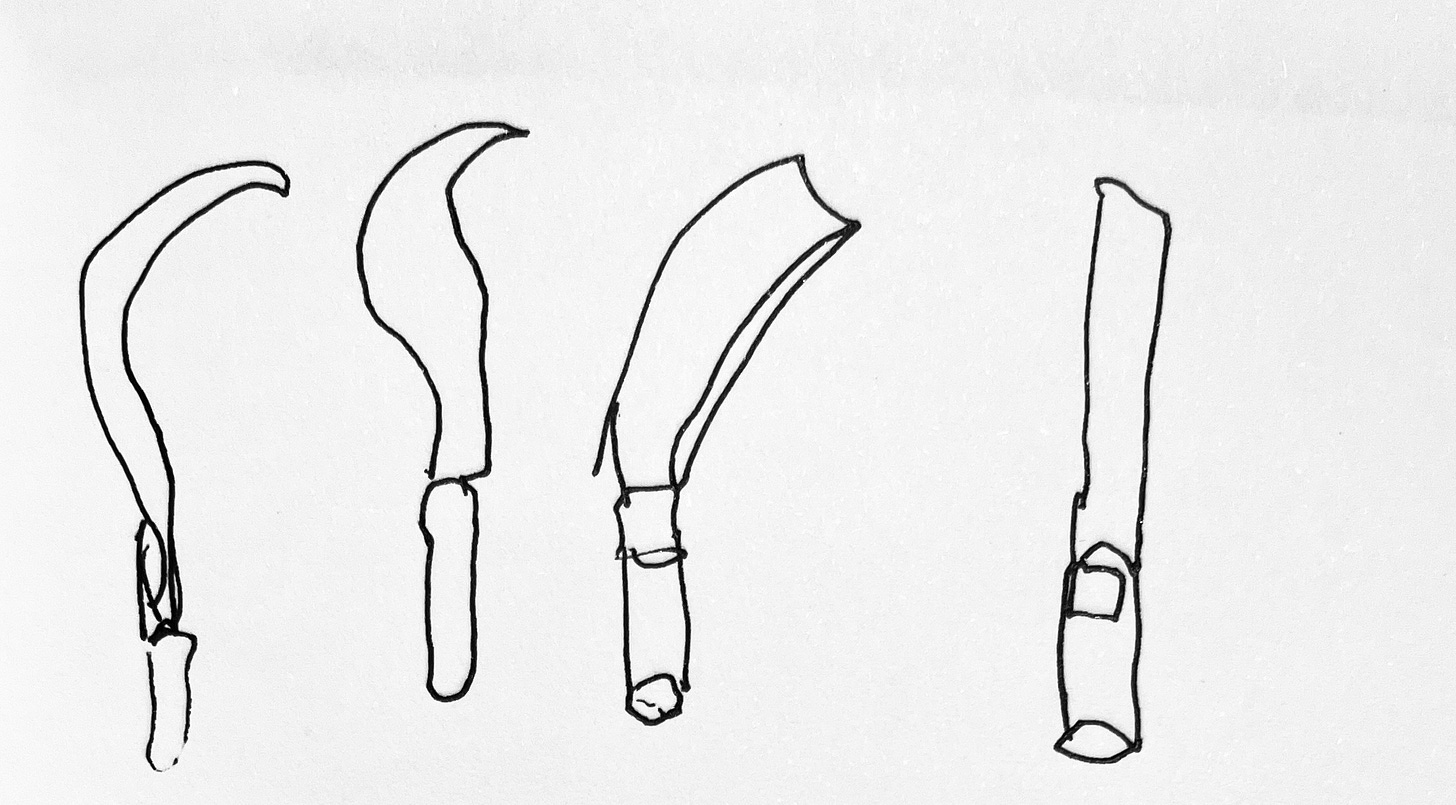
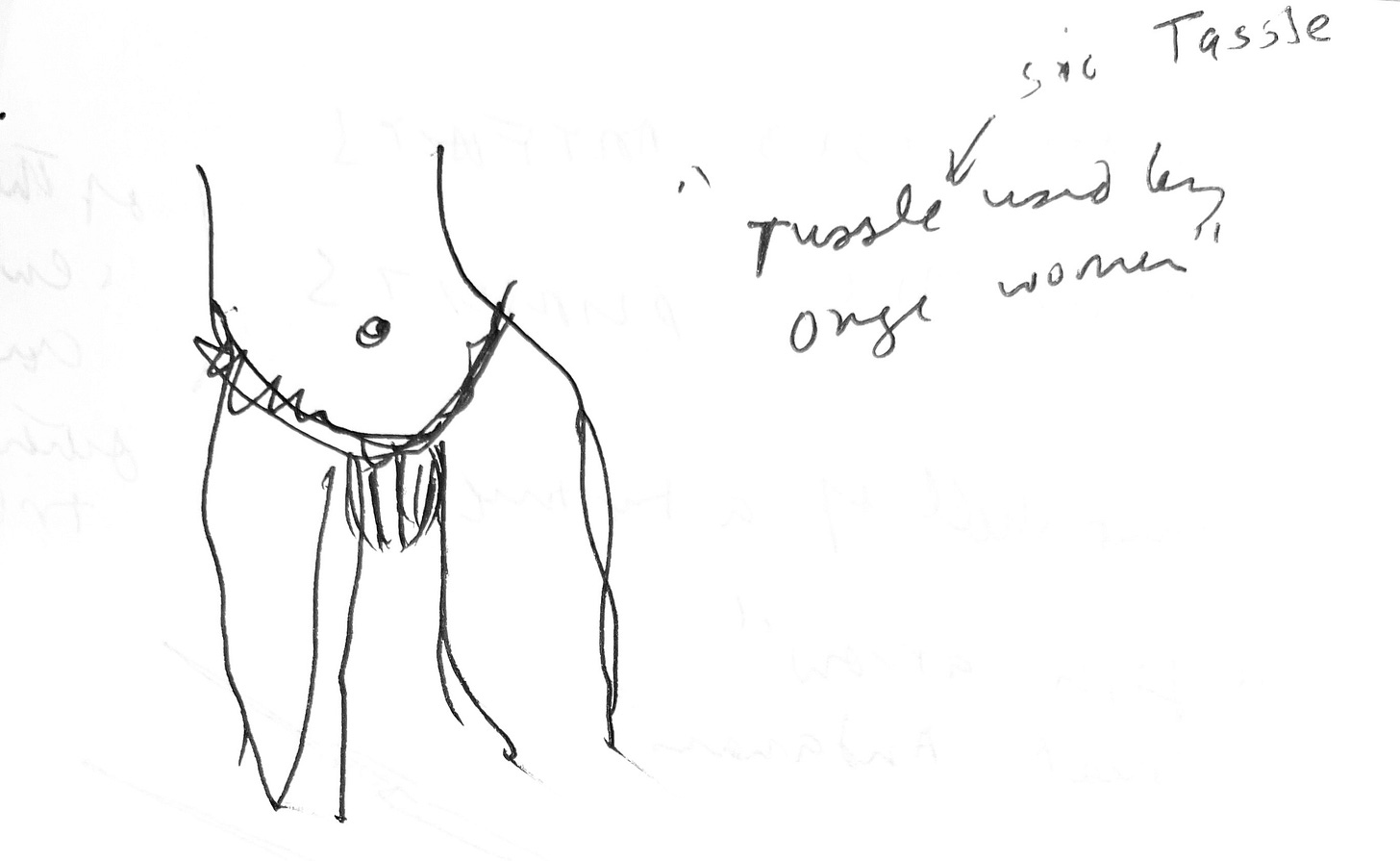

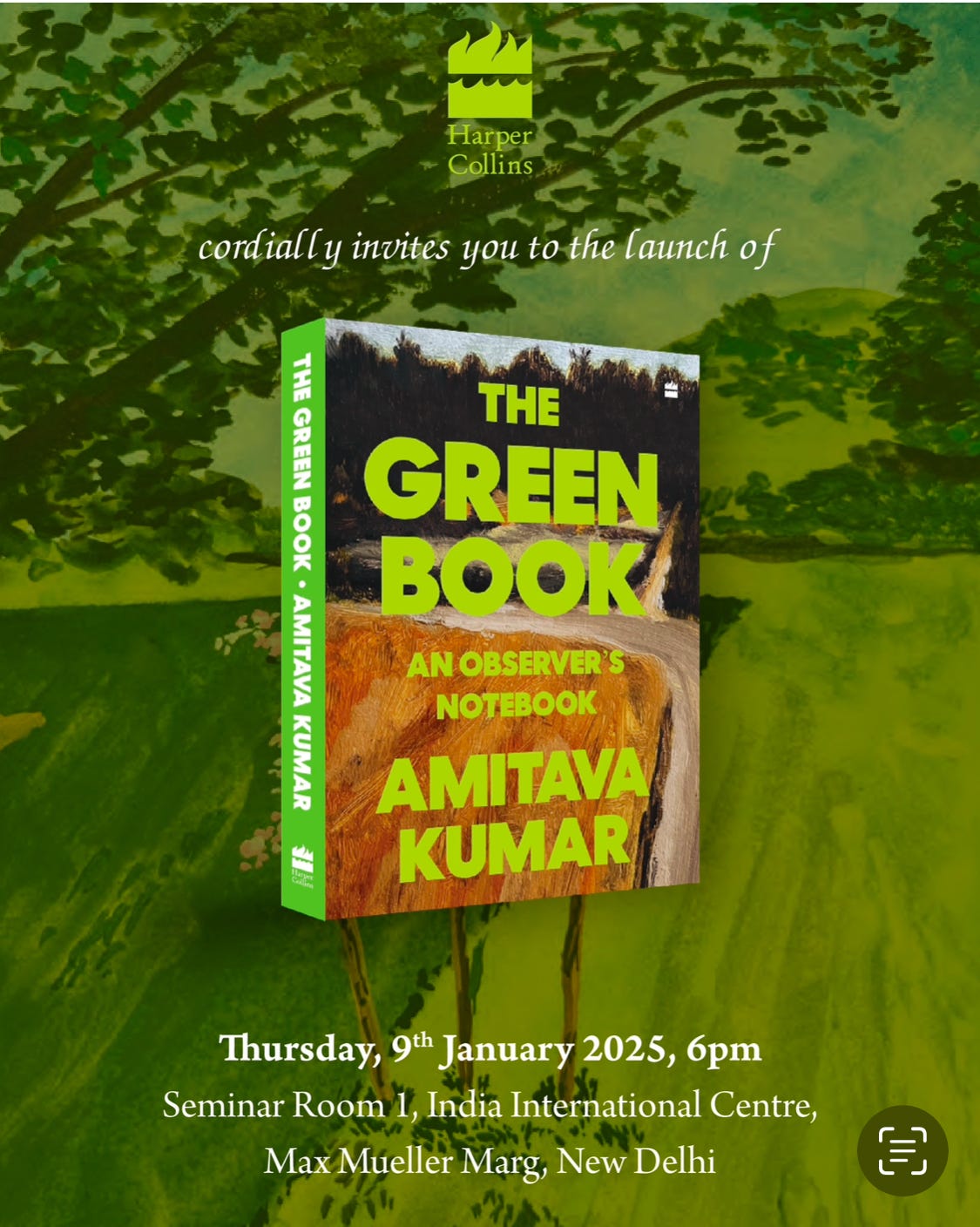
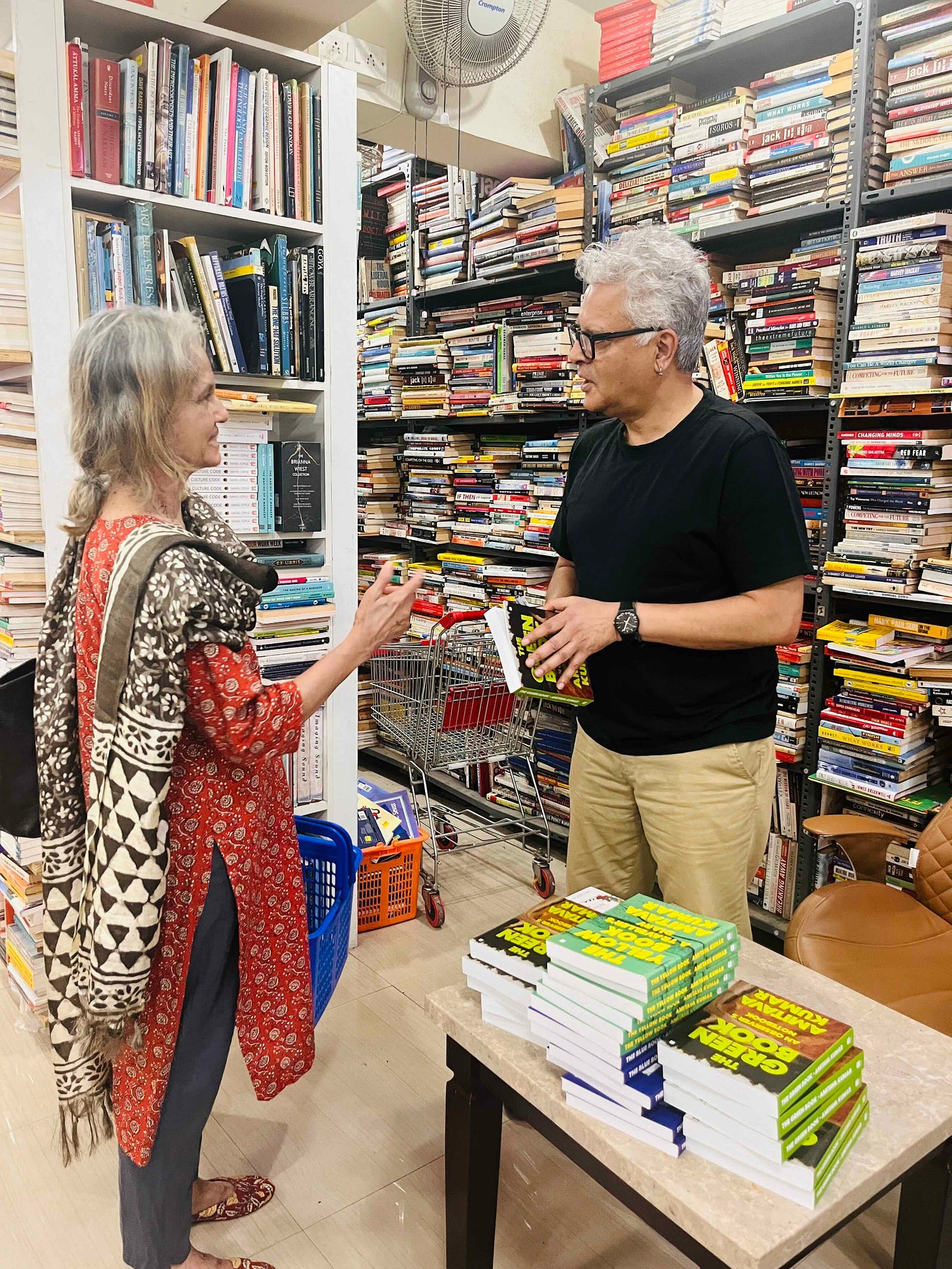
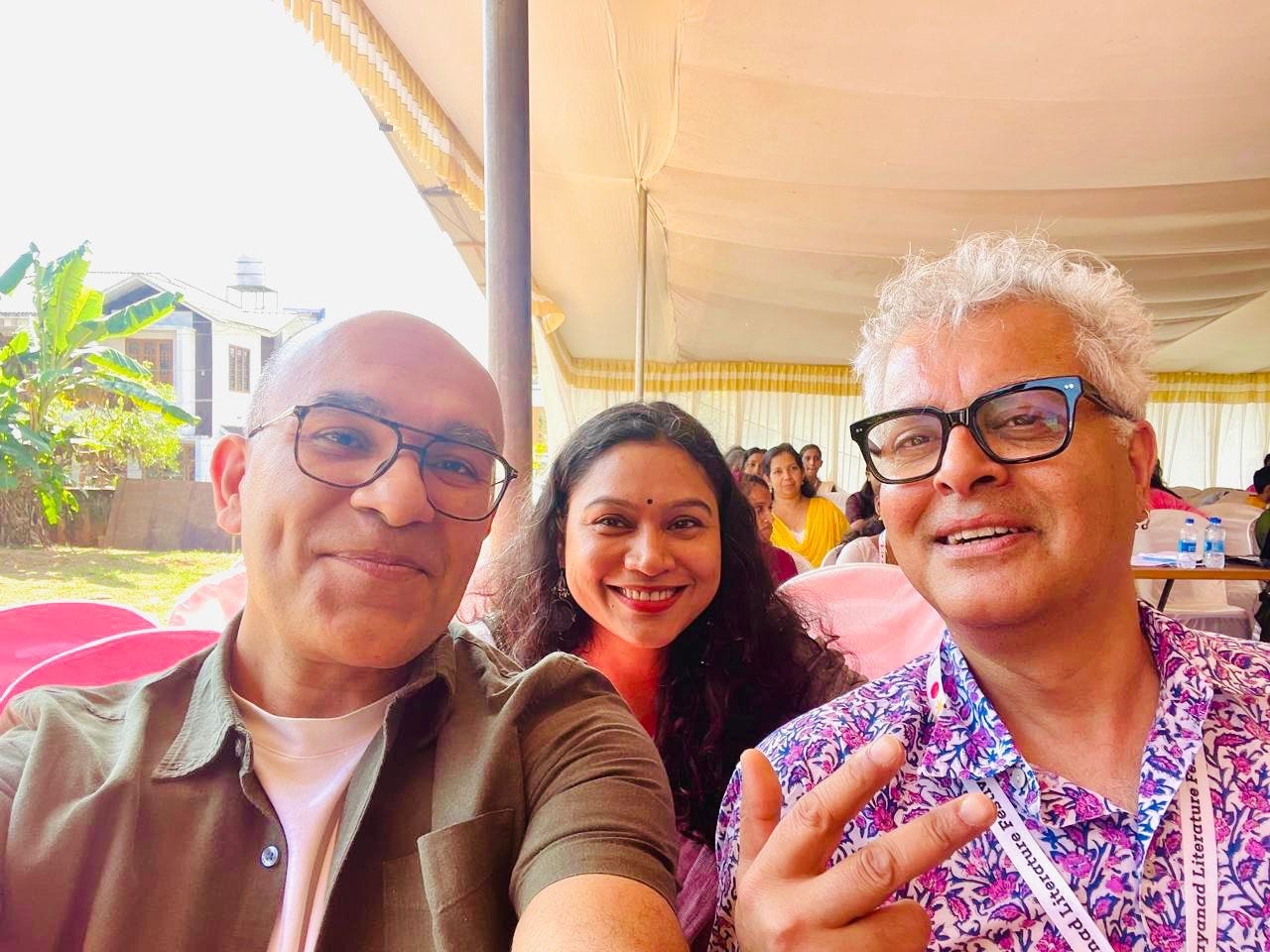
Speaking of “anthropology” you might wish to consider that a boat you drew as an example of balance is a version of the catamaran now universally acknowledged as superior sailboat design. This the prahu used all the way from Java to Madagascar and now in the Americas Cup
For interactive conversation try Facebook and Instagram? Enjoyed your newsletter.